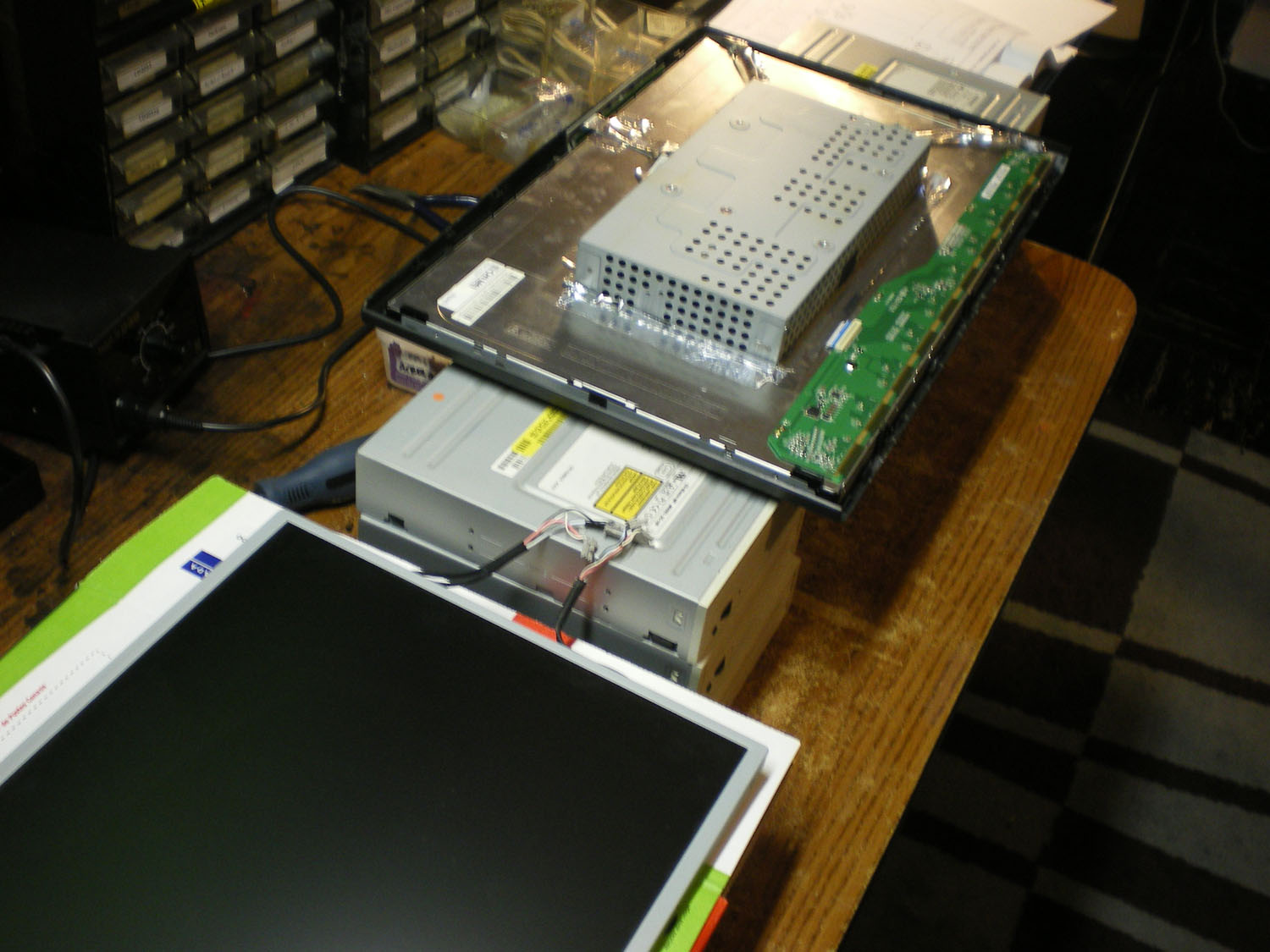Re: Acer x193w with Darfon B092-XXX inverter - assistance needed! [lotsa pics!]
I followed your advice closely - also once turning the power off I clicked the power button on the monitor a few times to help discharge the caps.
I used insulated pliers to switch the connectors around.
I had to come up with a way of seeing the bottom of the screen without disturbing the setup...I knew that pile of CD roms I have would come in handy some day! haha

Unfortunately, the monitor still does it, having tried replacing each CCFL with a working one.
Originally posted by retiredcaps
View Post
I used insulated pliers to switch the connectors around.
I had to come up with a way of seeing the bottom of the screen without disturbing the setup...I knew that pile of CD roms I have would come in handy some day! haha
Unfortunately, the monitor still does it, having tried replacing each CCFL with a working one.

Comment